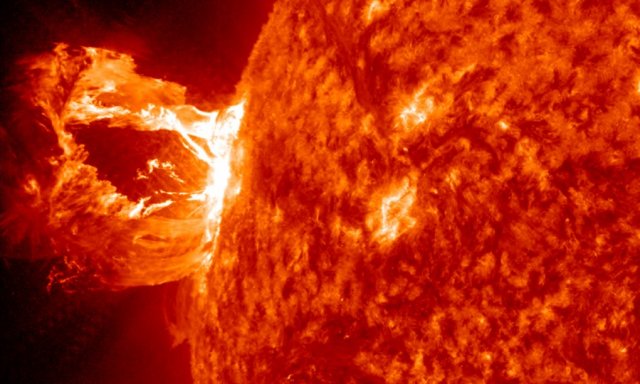Mysterious radiation event of 774 might be (a little) less mysterious
Ars Technica » Scientific Method 2012-12-03

Everybody loves a good “whodunit?” How else could you explain the number of television shows with the prefix “CSI”? So when a study in Nature identified a previously unknown (and very large) spike in carbon-14 around the year 774 AD, it raised a lot of eyebrows. This radioactive isotope of carbon is created when energetic particles from beyond the Earth transform atmospheric nitrogen to a form of carbon with two neutrons more than the most common isotope.
Nobody could think of a historical account of unusual phenomena in the heavens that might have triggered a surge in 14C production, and something like this should have been hard to miss. So when a college student from UC-SD found a record of a “red crucifix” in the skies over Britain in that year, Nature published his note.
The original report, published by researchers from Nagoya University in Japan, involved analysis of Japanese cedars. Because the production of carbon-14 in the atmosphere varies over time, researchers often pursue records of that variability to increase the accuracy and precision of radiometric carbon dating. Tree rings provide one of those records.
Read 10 remaining paragraphs | Comments